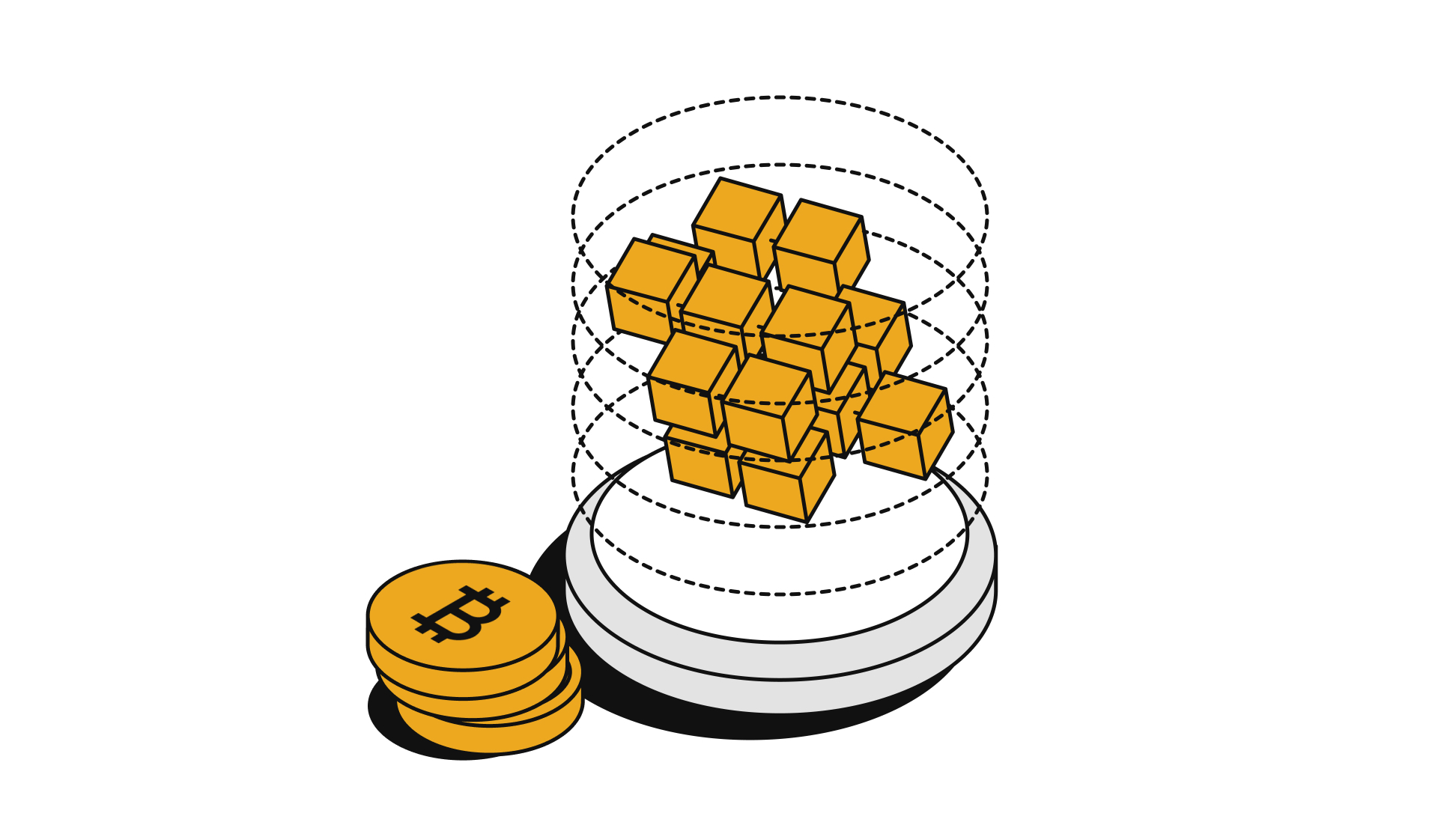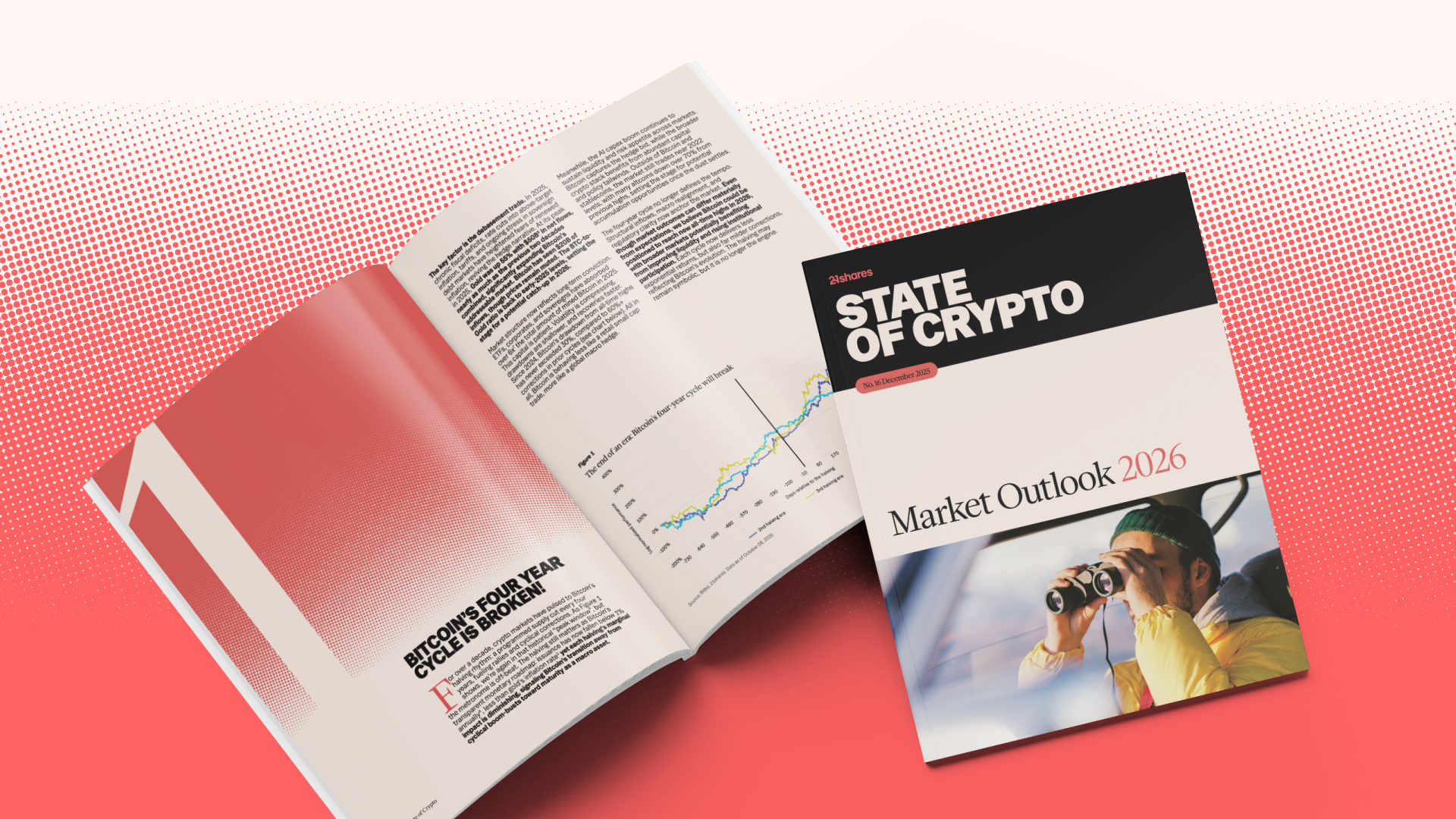Crypto Market Rises 9% Amid Bitcoin Surge and Amazon Rumors
.jpg)


Market Outlook
The crypto market soared by 9% this past week from a sharp uptick in the price of Bitcoin. The cryptoasset briefly surged past the $40K mark for the first time in 6 weeks on the back of a rumour suggesting that Amazon would accept Bitcoin as a payment method. The aforementioned rumour was promptly denied by the e-commerce giant. They nonetheless reiterated their interest in exploring the crypto industry in the future.
The Amazon rumour has turned the market sentiment upside down and even buried another speculation from an unnamed source on a probe into an alleged bank fraud carried out by Tether executives. The US Department of Justice reportedly investigates whether executives concealed the nature of their business to facilitate the obtention of banking partnerships in the past. Similar to BitMEX founders, this could have a career-ending impact on Tether executives on US soil. However, if true, this won’t prevent USDT, Tether’s stablecoin, from operating globally — for instance, BitMEX has remained intact as a service. On the flip side, in the US, tighter restrictions and oversight over Tether might be implemented in the aftermath of proven bank fraud.
As such, these past couple of days were quite eventful and have perturbed the market infrastructure:
- Over $1 billion in total short liquidations in what appeared to be a foreseeable short squeeze. Futures open interest increased by $1.4 billion this past week, especially in tandem with the recent rally in prices.
- 71.7% of the selling pressure came from traders who invested in BTC in the past 6 months in the spot market.
- Though the options market for Bitcoin is noticeably smaller than the futures market, options traders have overly bet on call strike prices out of the $30K-to-$40K range, at $80K per bitcoin for August 27th. It is a testament to the more positive sentiment amongst derivatives traders enthusiastic about an uptrend going forward.

Binance Coin (BNB), the fourth most valued cryptoasset has been oscillating for a while due to regulatory crackdowns in various jurisdictions on Binance, the exchange. The company seems to take the regulatory pressure quite seriously as they went on a hiring spree focused on a talent base with legal background. They are also seeking another CEO with a regulatory background to replace Changpeng Zhao (CZ) for the global entity. Additionally, the US subsidiary of Binance is planning to IPO. As this process is in the early stages, we expect it to be happening sometime in mid-2022 onward.
Binance, the leading exchange in spot and futures volume, lost 77% of its daily trading volume due to the latest China ban waning speculation. Now at $24B vs. ~ $106B in mid-May. Tether (USDT) is still the most used cryptoasset to trade with, representing 82% of the market share. BUSD, Binance stablecoin, comes second and accounts for only 12%. However, we don’t expect the trading volume to reach new highs anytime soon for various reasons:
- A significant portion of their volume was coming from trading esoteric cryptoassets not yet available on Coinbase, Kraken and Bitstamp, etc. Regulatory scrutiny grows in light of the comment of SEC Chair Gary Gensler on the requirement for both centralized and decentralized crypto services to comply with US securities laws. Therefore, restrictions or delisting of cryptoassets deemed unregistered securities might prevail in the US & Canada. In the same vein, Uniswap, the leading decentralized exchange within DeFi, removed such security tokens from their interface (not the protocol itself) owned by Uniswap Labs, their company registered in the US.
- Binance recently limited the leverage level to 20x instead of +100x and ceased margin trading on various fiat currencies such as the Euro, Australian dollar, and the British Pound. As such, we should anticipate excessive speculation to diverge to crypto-native derivatives products in DeFi such as Dydx and Perpetual Protocol, etc.
- Lastly, government officials around the world have raised concerns about stablecoins, including Chairman Powell of the Federal Reserve. On that note, potential restrictions on stablecoin trading could significantly plummet trading volume across the board as they serve as an instant onramp to access cryptoassets.
As the industry matures, we’ll witness more regulatory compliance on the part of crypto companies to both ensure consumer protection and fair competition amongst players. To trend in the right direction and encourage innovation, educating regulators must be at the cornerstone of efforts to harness the full potential of crypto.
As of writing, the NUPL ratio currently sits in the yellow zone at 0.37, meaning there’s more unrealized profit in the market than unrealized losses. However, since late May, we are in a market downturn resulting in substantially less speculation. The most representative emotion of this current market cycle is ‘anxiety’ as we could enter the orange or the fear zone, should the price of Bitcoin continue to nosedive going forward. In the near term, we anticipate the price of bitcoin to consolidate above the $30K mark in the absence of black swan events.
The long-term investment case for cryptoassets has not only remained intact but has also improved with world-first crypto integrations into traditional financial infrastructure. Our partnership with Comdirect is a good archetype of such a case. Similarly, Mastercard announced its intention to help crypto companies issue a card option in their offering to simplify the conversion process with fiat currencies anywhere Mastercard is accepted. Undeniably, these developments are steps forward in the adoption lifecycle of cryptoassets to broaden the outreach of crypto services. In the United States alone, Mastercard credit purchase volume was $837 billion at the end of December 2020. Therefore, the share of crypto-related volume in the Mastercard network (and other card issuers) will be a good proxy for B2B crypto adoption. At 21Shares, we anticipate the crypto pie to increase in tandem with the rise of digital payments, which have become dominant services since the wake of this health crisis.
On the institutional front, there is an overall positive sentiment. Investors continue to accumulate cryptoassets at discounted prices through our ETPs, with a total of $1.3 million in net inflows this past week. Outside Europe, the positivity is infectious as well. Today, Fidelity Digital Assets published their new survey composed of +1,000 institutional investors. The results are promising as 70% of surveyed institutional investors plan to allocate to crypto over the next five years. Despite the market downturn, long-term investors are willing to bet on the upside of the crypto industry as a portfolio diversifier. For instance, the investment case for Bitcoin as an emerging store of value is to exceed the market value of gold of ~$11 trillion. Indeed, Bitcoin is fundamentally a better asset than gold: scarcer, easier to store, faster to transfer, access, verify, and audit. Numbers speak for themselves. According to NYDIG, measured using 5-year holding periods, Bitcoin’s worst annualized return has been +28.8% so far, compared with -19.3% for US Equities and -16.1% for gold.
Note, this investment case does not include the incredible innovations atop Bitcoin. The Lightning Network and smart contracts are examples, and these functionalities could expand the potential value of Bitcoin by orders of magnitude. Smart contracts make Bitcoin more programmable akin to Ethereum, and Jack Dorsey, CEO of Twitter, is willing to tap into this opportunity. Last week, the entrepreneur announced the launch of a new startup purposely built as a developer platform for decentralized financial services using bitcoin as the main settlement layer.
Weekly Returns
The returns of the top six crypto assets over the last week were as follows — BTC (-5.38%), ETH (-6.05%), BNB (-8.61%), XRP (-9.58%), and ADA (-10.84%).

Net Inflows per 21Shares ETP
The net inflows of our ETPs combining $11.6 million in the past week, were as follows: AADA (-$ 917,535.20), ABNB (+$ 397,825.41), ABTC (+$1,989,353.59), ADOT (+$345,810.21), AETH (+$ 8,717,574.82), ASOL (+$ 425,477.50), AXRP (+$ 690,300.65).

Media Coverage
We started off the week by announcing the strategic key appointment to our management team, Isabell Moessler, a Head of Distribution for the EMEA region. Isabell has a long track record with over 16 years of ETF experience in leadership and management positions at several companies in the financial sector - including Blackrock iShares and ETF Securities and most recently at the European exchange group Euronext. She acknowledges her new role will be to act as a leading liaison executive bridging the company and institutional clients to raise awareness of our listings and range of products.
"We want to offer both new and existing customers insight and access to the world's broadest portfolio of crypto ETPs in the crypto asset class. And not only in the established markets such as Switzerland and German region, but also in the rest of Europe and the Middle East - regions where I can contribute to consistent growth with our now 8-person sales team. I’m honoured to have this opportunity to work with such high-caliber industry experts to help drive a flourishing crypto ETP ecosystem in Europe." — Isabell Moessler, 21Shares’ Head of Distribution for the EMEA region.
On July 21st, our Head of Switzerland, Sina Meier, moderated a panel discussion about stablecoins and their implications, drawing a comparison between the developments in the US and Europe. The panel was hosted by Frankfurt School Blockchain Center in partnership with DLT Talents (Women in Blockchain) and Mastercard. Speakers on the panel include: Holly Jones, Director, Blockchain & Digital Currencies, Mastercard, Anca Bogdana Rusu, Partnerships, Policy and Advocacy, Celo, Jaye Harrill, Ecosystem builder, Quantstamp, Inc., and last but not least Dr. Nina-Luisa Siedler Partner, DWF.
One of our personal favorite key takeaways from the panel was when Sina asked Dr Siedler if stablecoins are here to stay in her opinion.
“My view on that is that the crypto space is still not used by the masses out in the street, it’s still used by highly educated people in that space so that’s still a minority. What CBDCs could reach is that mass adoption, which classical crypto issuance couldn’t meet yet because people are so in love with this technology that they never really tried to [innovate] the user experience and that still makes the use of tokens of any kind for normal people out there in the street really difficult. But whoever is using stablecoins right now, I believe will stick to stablecoins, because they also believe in the concept behind it, and I also agree that it is a very very narrow path between an overly controlling system and still keeping the freedom and also the privacy of all of us, and that’s the difficulty with CBDCs.” -- Dr. Nina-Luisa Siedler Partner, DWF
You can watch the full panel discussion here.
In other news, our very own Research Lead Eliézer Ndinga was featured on the Vienna-based news website “Trending Topics,” as he contributed a guest article titled: “*Despite the slump in Bitcoin prices, positive sentiment rises on the institutional front.*” Three days later, our research team’s optimism was validated when Bitcoin went up yesterday, revisiting Eliézer’s analysis in this article announcing the news that Bitcoin passed the $38K mark.
Last but not least on our weekly Media Coverage watch, 21Shares’ Global Head of ETPs, Laurent Kssis, was also featured yesterday on CoinDesk. Laurent explained that short liquidations – bearish trades where the principal was wiped out due to margin calls – kicked in around 9 PM ET time Sunday, helping to improve market sentiment and pushing the price of BTC up. Kssis added that with negative headlines continuing to pile on and with Tether in a fragile market, there could still be “*repercussions if investigations point to more severe allegations.*”
News - The B-word Conference Took Place Online on July 21st
What happened?
The B Word conference hosted by the Crypto Council for Innovation, ARK, Square, and crypto investment firm Paradigm took place online on July 21st. This time around, the conference had notable panel speakers like Cathie Wood, Jack Dorsey, and Elon Musk. The virtual summit aimed to demystify Bitcoin narratives while also encouraging critique.
Here are the key takeaways:
Energy consumption, led by Nic Carter, co-founder of blockchain data aggregator, Coin Metrics**:**
- Most of the energy expenditure comes about during the initial generation of new BTC units as a function of the mining activity. Not related to the verification of transactions. In reality, validating the digital signature of transactions for correctness expends a trivial amount of energy compared to the exhaustive process of minting new tokens as it can be undertaken by regular laptops.
- “Miners consume 0.26% of world’s electricity production, and 0.11% of world energy production”.
- The network is also accountable for “60 megatons of co2 emission per year, translating to 0.1% of the world’s discharges”.
- In addition, BTC energy spend is matching that of Austria or Venezuela, but represents 0.7% of China’s total consumption.
- He even provided some amusing figures when comparing the network’s total energy expenditure as 12x smaller than always-on electrical devices in US households.
- Bitcoin mining has the power to exploit untapped sources of energy where cheap electricity can be unearthed, predominantly found through renewables. A view that is backed by why miners were “disproportionately located in China due to the abundant, stranded amounts of hydro energy located in the country”.

Bitcoin as a tool for economic empowerment:
- At 21Shares we tuned in on the second track where ARK’s Cathie Wood, Tesla’s Elon Musk, Square’s Steve Lee, and Jack Dorsey started off by reaffirming why they’re believers in the “B-word” and how they see it as a tool for economic empowerment.
- “Bitcoin’s a hedge against the confiscation of wealth, and that can take place in a myriad of ways,” Wood said. “But inflation and essentially hyperinflation, in emerging markets, is the primary way; talk about destroying purchasing power.”
- Agreeing with Wood, Dorsey had another take on this. “If you focus on the world remittance problem, Bitcoin solves so many of those problems today instantly, without having to go to any intermediaries, or any slowness or complicated systems that a corporation or state created, so, having sound money that is separate from the state is the idea,” Dorsey said.
Why does it matter?
- For Bitcoin to gain mainstream acceptance, the network needs to overcome a set of mistakenly portrayed restraints that are responsible for inhibiting its adoption. The issues range from how non-eco-friendly the bitcoin ecosystem is, its role in facilitating criminal activity, its concentrated ownership, and finally its impractical functionality in serving as an infrastructure for global payments due to limited scalability. All of which are of course misapprehended arguments. That said, the crypto space at large - and especially Bitcoin - suffer from a lack of education and awareness around the basic pillars that make up the ecosystem. Hence why conversations, critique, and engaging with key players are fundamental to improve the building and development of Bitcoin and other cryptocurrencies, as well as lay the groundwork for onboarding the general public into the dialogue.
- Bitcoin has memorably evolved over the last decade to raise the ranks of epitomizing the world’s most transformatively disruptive technologies. The considerable legacy network has achieved major milestones in its growth journey, from witnessing the migration of hash power outside China, to beholding the development of layer 2 solutions such as lightning that pushes the network beyond its ceiling and helps it fundamentally scale in the face of emerging economies hoping to capitalize on the network for remittance settlement and wealth preservation. Not to mention how instrumental the network had been in fighting criminal offenses on the basis of its transparent nature, to the point that we now have a system sparring the capacity to measure and trace illicit activity. In effect, there’s still a great deal of industrial maturation that the world should be longing for as we’re only glimpsing the offset of this technological breakthrough and life-altering improvements bestowed upon us through this innovative system. The only way to reap its benefits is through global recognition and understanding of this alternative system from a consumer as well as a regulator’s perspective. And this is why conferences as such are a step in the right direction of amplifying global awareness.
- To watch the full conference, click here.
Disclaimer
The information provided does not constitute a prospectus or other offering material and does not contain or constitute an offer to sell or a solicitation of any offer to buy securities in any jurisdiction. Some of the information published herein may contain forward-looking statements. Readers are cautioned that any such forward-looking statements are not guarantees of future performance and involve risks and uncertainties and that actual results may differ materially from those in the forward-looking statements as a result of various factors. The information contained herein may not be considered as economic, legal, tax or other advice and users are cautioned to base investment decisions or other decisions solely on the content hereof.

.jpg)








